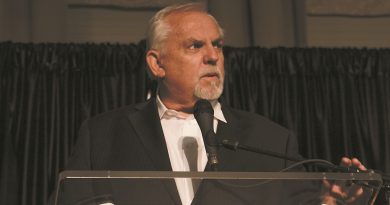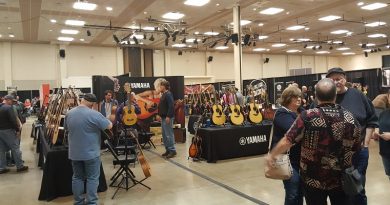‘Clybourne Park’ sure to make you laugh and think
UW Tacoma, the Broadway Center for the Performing Arts and Toy Boat Theatre present “Clybourne Park,” a darkly humorous play directed by Marilyn Bennett.
Winner of both the 2011 Pulitzer Prize for drama and the 2009 Tony Award for Best Play, “Clybourne Park” tackles race and gentrification in the context of real-estate in a strong and seamless approach.
Tickets are now on sale for “Clybourne Park,” available in person at the Broadway Box Office or online at broadwaycenter.org or by phone (253) 591- 5894.
Tickets for UW Tacoma students are free with a valid student ID and $15 for the general public. Students must present student ID in person at the Broadway Box Office to receive a ticket or use the promotional code: UWTFREE for online orders. This can be done in advance or on the day of the show. But beware — tickets might sell out on the day of the show, so it may be best to purchase them in advance for a guaranteed seat.
The May 3 performance at 7:30 p.m. is a pay-what-you-can-performance, where a donation box will be placed at the lobby door for reinvestment into future Broadway Center and UWT productions. Tickets for the Thursday performance should be reserved beforehand to ensure everyone has a seat.
The May 11 performance at 7:30 p.m. will accommodate deaf viewers and provide two sign language interpreters on stage.
Written as a continuation of Lorraine Hansberry’s groundbreaking play “A Raisin in the Sun,” “Clybourne Park” is set in the same modest bungalow as the Younger family buys and prepares to move into at the end of Hansberry’s play.
What makes ”Clybourne Park,” is its function as a split-level comedy built upon a foundation of challenging times and radical mistrust explodes in two outrageous acts set 50 years apart.
Chock-full of sharp-witted humor, “Clybourne Park” approaches a controversial topic in a way that’s easier for audiences to swallow. Playwright Bruce Norris paints America’s uneasiness, seen even today, despite our apparent progress.
The play’s first act takes place in 1959 immediately after “A Raisin in the Sun,” when Bev and Russ Stroller prepare to sell their home after a tragedy in the family.
Karl Lindner, the president of the community association, tries to bribe the black family who bought the Stroller’s home to not move into the Clybourne Park neighborhood, as he fears property values will decrease due to black residency.
The second act jumps ahead 50 years to 2009, where the roles are now reversed when a white couple decides to buy the same three bedroom bungalow in what is now a predominantly black neighborhood. Steve and Lindsey, who bought the bungalow — which is now decayed and covered in graffiti — plan to tear down the house to rebuild a bigger and taller one in its place, signaling a new wave of gentrification.
“Clybourne Park” challenges our notions of how far we have come towards true racial acceptance.
Comparable to Tacoma’s Hilltop neighborhood which has undergone significant changes, Clybourne Park has an abundance of modern gentrification.
Rent and housing prices have doubled, new developments are persistently popping up at almost every corner and the existing community can no longer afford it. This eventually forces the majority of the population to relocate and leave behind the community they’ve built. Every city has a Clybourne Park, and Hilltop seems to be the Clybourne Park of Tacoma.






